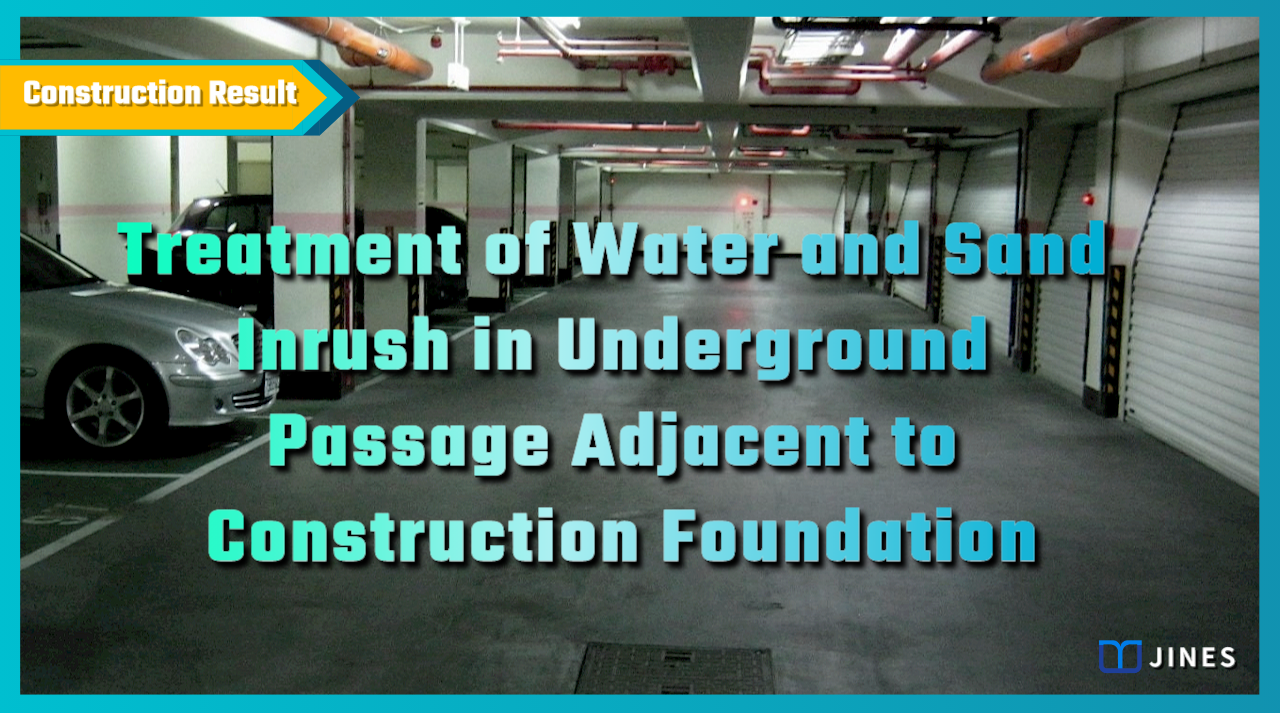
REPAIR OF BASEMENT FLOOR WATER LEAKAGE IN SLAB FOUNDATION
Elastic epoxy polyimide resin grout material for sealing water leakage
―
1. Project Background
A community building underwent a comprehensive excavation to establish connectivity within the basement area. The building’s foundation utilized a combination of slab and raft designs.
After a period of time, there was an occurrence of intermittent water leakage from the bottom of the slab foundation blocks. In order to maintain the normal use of the underground space, the management unit engaged a leakage detection and sealing contractor to address the leakage issue.
Unexpectedly, the water leakage situation worsened after their intervention, and some of the wastewater discharge pipes embedded within the slab foundation were inadvertently blocked.
To thoroughly resolve the issue of water leakage from the basement floor, the management unit commissioned an experienced company to conduct an investigation into the root causes of the leakage.
Simultaneously, they were developing effective waterstop and reinforcement strategies to ensure the long-term safety and convenience of the building’s use.
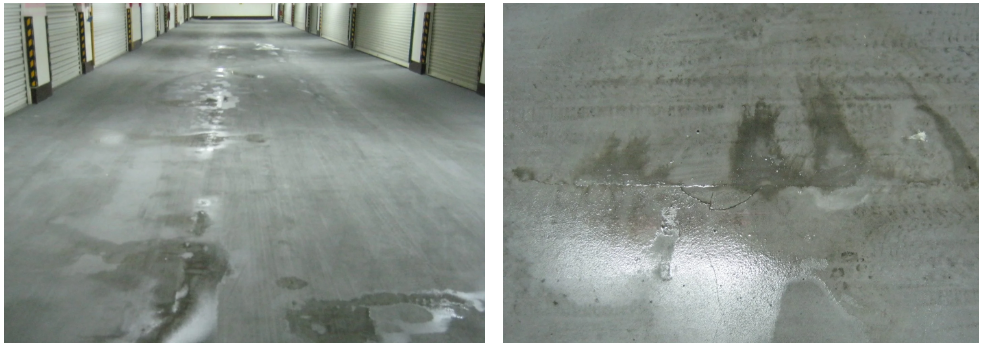
―
2. Solution
Through on-site inspection and construction drawings, it had been observed that the direction of the linear water leakage in the basement corresponded to the alignment of the secondary construction joints and the layout of the wastewater pipes.
Furthermore, after attempting to seal the wastewater pipes during the initial leak detection and plugging, the water leakage phenomenon intensified.
A reasonable assessment suggested that the bottom slab leakage was likely caused by the overflow of groundwater and wastewater from damaged pipes, which then travels upwards through the secondary construction joints to the floor surface.
Based on the characteristics of this project, the following solutions have been formulated:
- Full linear grouting at the interface of the secondary construction joints to prevent water leakage from emerging at other localized points after partial sealing.
- Utilization of a 1.5-diameter resin injection technique to control the reaction time of the grouting material.
- Implementing a cross-angled double-injection method along with monitoring for water seepage and grout overflow to ensure comprehensive filling of the gaps around the secondary construction joints and wastewater pipes.
- Incorporating the use of long-lasting self-expanding polyimide resin and elastic polyimide resin in combination to achieve dual functionality in protecting the wastewater pipes and filling bonded concrete cracks.
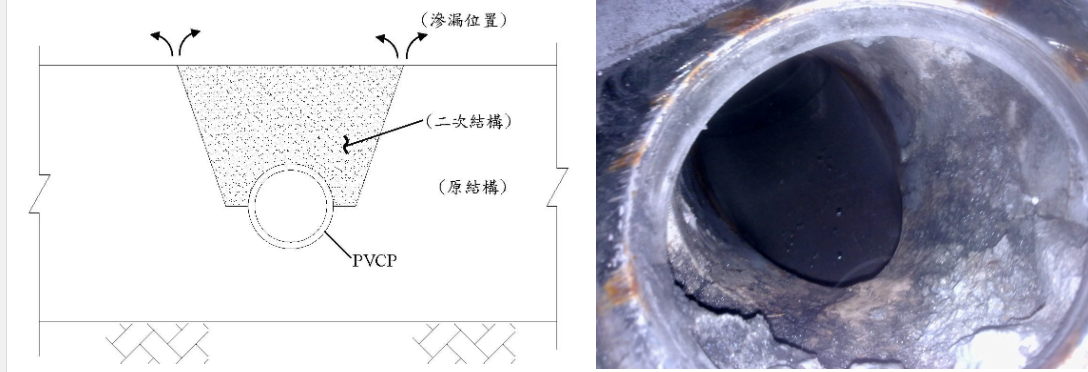
―
3. Works Design
After evaluation, this project required approximately 200 meters of linear length for repair, with leakage phenomena of varying degrees occurring in over 100 meters. As the client wished to proceed with leak repairs without first clearing the blocked wastewater pipes, the construction design was established based on the various requirements as follows:
1. Mark the locations of the on-site secondary construction joints and place grouting holes @1/2 slab thickness away from the joints, at a position of 1/2 slab thickness.
2. To prevent recurring water leakage due to seismic or settling deformations of the slab foundation, utilize self-expanding polyimide resin for the first-degree water stoppage injection and employ elastic polyimide resin for the second-degree joint bonding and filling injection.
3. After installing the grout injector orifices, perform sequential injections using clean water to cleanse the cracks of dust, debris, and impurities. Observe the direction of the cracks and fill them with clean water.
4. Employ self-expanding polyimide resin for injection to seal off the seepage water. Simultaneously, fill around the wastewater pipes to prevent subsequent grout from flowing into the pipes.
5. Use the same injector to introduce non-expanding elastic polyimide resin to fill and bond the gaps.
6. During the injection of elastic polyimide resin, monitor the leading-edge crack. The resin should achieve an outflow of clean water, followed by an overflow of self-expanding resin. Only when the elastic polyimide resin flows out from the same position can the filling of the crack be considered complete.
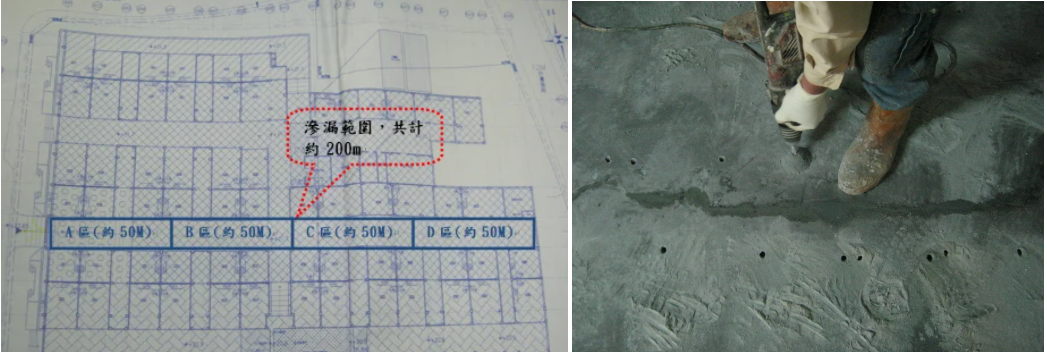
―
4. Works Process
The elastic polyimide resin used in this application had been specifically chosen for its hydrophilic nature, minimal expansion of up to 10% upon contact with water, and adhesive strength exceeding 500 kPa.
Its cured physical properties include an elongation rate of over 30% and a tensile strength of more than 2500 kPa, which are sufficient to accommodate potential deformations in the repair zone’s slab foundation in the future.
Given the superior performance of this grout material, achieving satisfactory results during construction only required adherence to the outlined steps, proper control of grouting pressure, and vigilant monitoring of the grout discharge conditions within the construction joints.
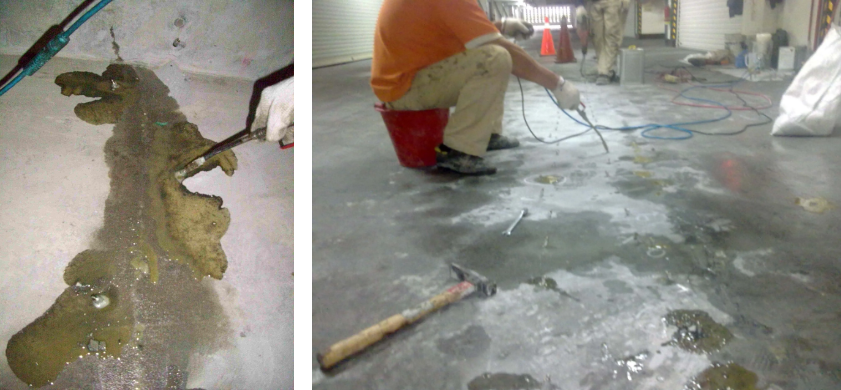
―
5. Results
The construction process went smoothly, with only a few instances of low grouting pressure overflow occurring at pre-existing flawed concrete locations. This issue was resolved using a secondary grouting approach, leading to the complete elimination of water leakage from the basement floor.
After allowing the slab surface to dry and confirming through joint inspection with the property owner that no further instances of damp concrete or leakage exist, the orifice injectors were dismantled.
The drill holes were filled with cement mortar to restore the site to its original condition. With these steps successfully carried out, the repair work for the layout-based basement floor water leakage was effectively completed.
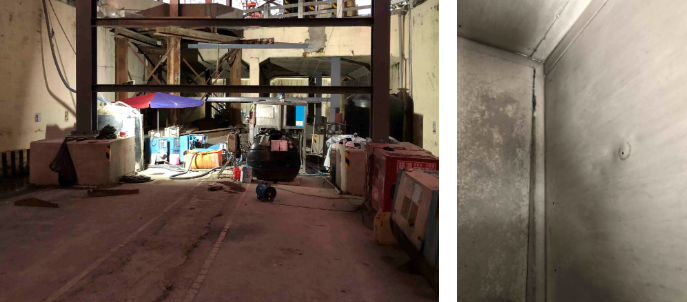
―
Repair of Basement Floor Water Leakage in Slab Foundation
將下載檔案寄至:
・More Construction Result Sharing
Contact us:+886 2769-2355